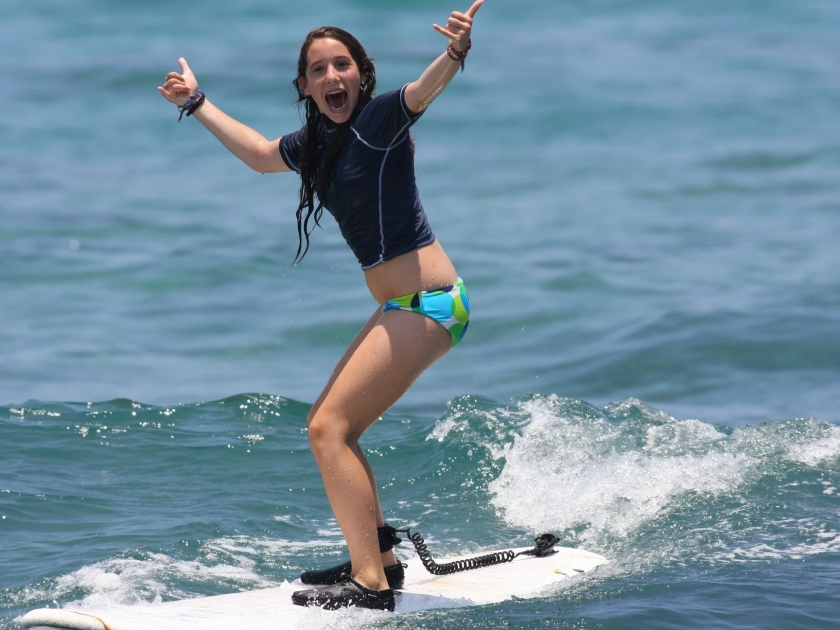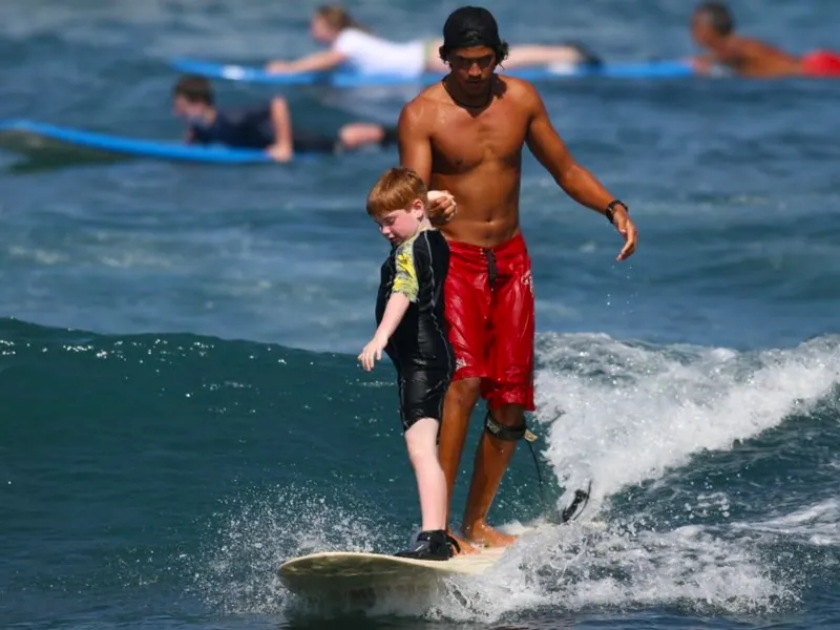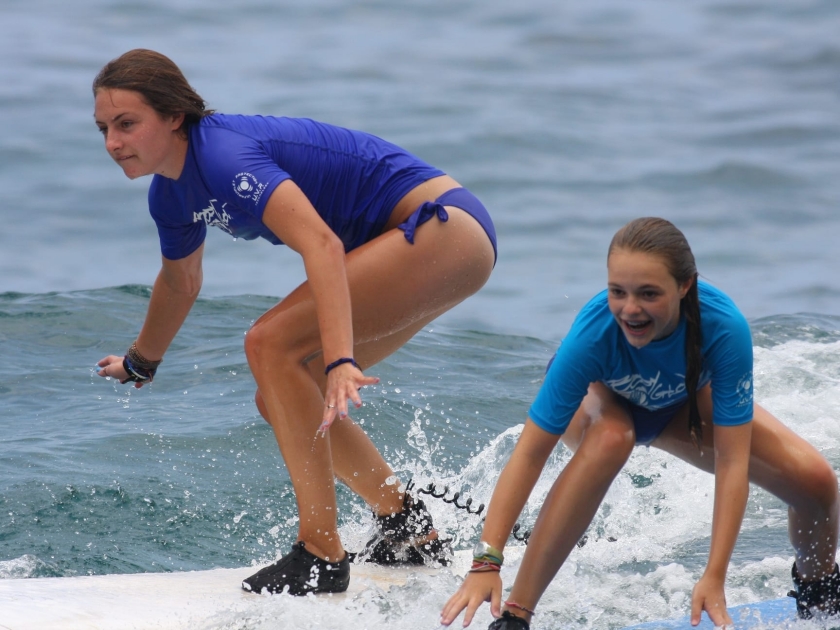Did you know that Kona, Hawaii, is not just famous for its coffee but also its perfect beginner-friendly surfing spots? Nestled on the Big Island’s sunny west coast, Kona offers warm waters, gentle waves, and stunning scenic backdrops, making it an ideal destination for those looking to catch their first wave. This guide will walk you through everything you need to know about starting your surfing journey in Kona, from finding the right gear and lessons to mastering the basics and understanding local surf etiquette.
Why Kona is Perfect for Beginner Surfers

Kona is a beginner surfer’s paradise, thanks to its gentle wave conditions that provide the perfect learning environment without overwhelming new surfers. The warm, inviting waters maintain a comfortable temperature year-round, ensuring that you can enjoy the ocean without the need for heavy wetsuits. Additionally, Kona’s beautiful beaches and picturesque settings, framed by lush greenery and stunning volcanic landscapes, create a breathtaking backdrop for your surfing adventures, making every moment on the board even more memorable.
Preparing for Your First Surfing Lesson

What to Wear
When gearing up for your first surfing lesson in Kona, it’s essential to dress appropriately for the conditions. Opt for a rash guard to protect your skin from the sun and surfboard wax, and consider wearing a wetsuit or swim trunks depending on the water temperature and your comfort level. Don’t forget a good pair of board shorts or a swimsuit that stays secure in the waves, and always apply waterproof sunscreen to avoid sunburn.
Gear Essentials
As a beginner, you’ll need a few key pieces of equipment to get started. A soft-top surfboard is ideal for learning due to its stability and forgiving nature. You’ll also need a leash to keep your board attached to your ankle, preventing it from drifting away. Surf wax is crucial for ensuring your feet have a good grip on the board. Many surf schools provide these essentials, so check with them before purchasing your own.
Physical Preparation
Surfing requires a good mix of strength, balance, and endurance, so preparing your body is key. Incorporate exercises that strengthen your core, such as planks and sit-ups, and practice push-ups to build upper body strength for paddling. Flexibility is also important, so include stretches for your shoulders, hips, and legs in your routine. Cardiovascular activities like swimming or running can improve your overall stamina, making your first surfing experience more enjoyable and less exhausting.
Finding the Right Surf School
Top Surf Schools in Kona
When looking for the best surf schools in Kona, a few stand out for their excellent reputation and comprehensive lessons. Hawai’i Lifeguard Surf Instructors is renowned for its experienced lifeguard-certified instructors who prioritize safety and fun. Ohana Surf Lessons LLC offers personalized coaching in small groups, ensuring individual attention and rapid progress. Kona Town Surf Adventures provides a friendly and supportive environment, perfect for beginners looking to build confidence and skills with the guidance of knowledgeable local surfers.
What to Look For
When choosing a surf school, consider several key factors to ensure a positive learning experience. Look for schools with certified and experienced instructors who have a strong understanding of water safety and surfing techniques. Smaller group sizes are preferable, as they allow for more personalized instruction and quicker learning. Additionally, check the duration of lessons to ensure they provide enough time to practice and receive feedback. Reviews and testimonials from previous students can also give you valuable insights into the quality of the surf school.
What to Expect During Your First Lesson

Lesson Structure
During your first surfing lesson, you can expect a well-organized structure designed to ease you into the sport. Typically, the session begins with a brief onshore introduction where you’ll learn about the equipment, safety protocols, and the basics of surfing. This is followed by a demonstration of techniques on the beach before heading into the water. Once in the water, the instructor will guide you through paddling, catching waves, and standing up on the board, providing hands-on support and feedback throughout the lesson.
Basic Techniques
As a beginner, you’ll start with essential techniques that form the foundation of surfing. Paddling is the first skill you’ll practice, as it’s crucial for catching waves. Next, you’ll learn how to pop up from a lying to a standing position on the board, a move that requires balance and timing. Finally, maintaining balance while riding a wave will be a primary focus, with tips on foot placement and body posture to help you stay steady and enjoy your ride.
Safety Tips
Safety is paramount in surfing, and your instructor will cover critical information to keep you safe. You’ll learn how to handle wipeouts by falling safely and protecting your head from the board. Understanding surf etiquette, such as giving way to other surfers and not dropping in on a wave already being ridden, is also essential for maintaining harmony in the water. Additionally, you’ll be taught to recognize and avoid potential hazards like strong currents and rocks, ensuring a safe and enjoyable surfing experience.
Best Beginner Surf Spots in Kona
Kahalu’u Beach Park
Kahalu’u Beach Park is a top spot for beginner surfers, known for its gentle, rolling waves that provide a forgiving environment for novices. The beach is popular among beginners because the waves break consistently and are not too powerful, making it easier to practice paddling and standing up on the board. Additionally, the shallow, sandy-bottomed waters enhance the learning experience, allowing new surfers to gain confidence in a safe and controlled setting.
Banyans Beach
Banyans Beach, though renowned for its excellent surfing conditions, offers sections that are particularly suitable for novice surfers. The beach features more manageable waves on certain breaks that are perfect for beginners looking to transition from whitewater waves to catching green waves. The friendly local surf community at Banyans also makes it an encouraging environment for new surfers to practice and improve their skills.
Honl’s Beach
Honl’s Beach is another great option for beginner surfers, thanks to its consistently mellow waves that are ideal for learning. The beach’s forgiving surf conditions allow learners to practice paddling, popping up, and riding small waves with ease. Honl’s Beach also offers a scenic and less crowded setting, making it a relaxed and enjoyable spot for beginners to develop their surfing abilities without the pressure of a busy lineup.
Surfing Etiquette for Beginners
Respecting the Locals
Showing respect to local surfers is crucial when you’re new to a surf spot. Acknowledge that locals have an established presence and often a deeper understanding of the waves and conditions. By being polite, waiting your turn, and observing how the locals interact with the waves, you not only foster a friendly atmosphere but also gain valuable insights and tips from experienced surfers.
Wave Priority Rules
Understanding wave priority rules is essential to avoid conflicts and ensure everyone’s safety in the water. The basic rule is that the surfer closest to the peak of the wave has the right of way. If someone is already riding a wave, it’s important not to drop in or take off in front of them. Observing these rules helps maintain order and respect among surfers, allowing everyone to enjoy their time on the waves.
Environmental Considerations
As a surfer, it’s vital to keep the beaches clean and respect marine life. Always pick up your trash and participate in beach clean-ups to maintain the natural beauty of the surf spots. Additionally, be mindful of marine animals and coral reefs; avoid stepping on them and keep a safe distance to prevent any harm. By being environmentally conscious, you contribute to preserving the surf environment for future generations.o.
Common Challenges and How to Overcome Them

Balancing on the Board
Maintaining balance on the board is a common challenge for beginners, but it can be improved with practice and proper technique. Start by positioning your feet shoulder-width apart and keeping your knees slightly bent to absorb the motion of the waves. Focus on keeping your center of gravity low and your body relaxed. Regularly practicing on a balance board or doing yoga can also enhance your stability and core strength, making it easier to stay upright on the surfboard.
Paddling Efficiency
Effective paddling is crucial for catching waves and positioning yourself in the lineup. To improve your paddling technique, keep your body centered on the board with your head up and eyes forward. Use long, deep strokes with your arms, and engage your core to maintain a steady rhythm. Practicing in flat water or swimming laps can help build the endurance and strength needed for efficient paddling in the surf.
Fear of Wipeouts
Overcoming the fear of wipeouts is essential for building confidence in the water. Remember that falling is a natural part of learning to surf. When you do wipe out, try to relax and protect your head with your arms as you fall. Practice breath control and stay calm underwater, letting the wave pass before resurfacing. With time and experience, you’ll learn to handle wipeouts more effectively and develop the resilience to keep trying and improving.
Post-Lesson Tips
- Practice Regularly: Consistency is key to improvement; try to surf as often as possible.
- Reflect on Your Progress: After each session, take a moment to evaluate what you learned and areas to improve.
- Join Surf Communities: Engage with local surf groups or online forums for tips, support, and camaraderie.
- Watch Surfing Videos: Study videos of experienced surfers to learn new techniques and understand wave dynamics.
- Stay Fit and Flexible: Maintain a fitness routine that includes cardio, strength training, and flexibility exercises.
- Keep Learning: Read books, watch tutorials, and stay informed about surfing to continuously enhance your skills.
- Maintain Your Equipment: Regularly check and care for your surfboard and gear to ensure optimal performance and safety.
- Stay Safe: Always be aware of surf conditions, respect safety guidelines, and know your limits.
- Set Goals: Establish short-term and long-term surfing goals to stay motivated and track your progress.
- Enjoy the Journey: Embrace the learning process, celebrate small victories, and have fun in the water.
Start Your Surfing Journey in Kona
Learning to surf in Kona is more than just picking up a new skill—it’s an exhilarating experience that connects you with the ocean’s rhythm and the island’s natural beauty. The joy of catching your first wave, the thrill of improving with each session, and the sense of community among surfers are just a few of the many benefits awaiting you. So, don’t wait any longer! Book your first lesson today and embark on an unforgettable surfing adventure in the paradise of Kona. Dive in, ride the waves, and let the ocean become your playground.




